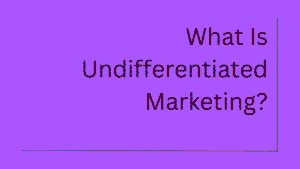As the software development industry ramping up very fast, you’re not just building apps that people use every day; you’re crafting experiences, solving problems, and making lives easier. But not everything that runs on a computer is what you’d typically call application software or software, simply.
Let’s take a journey through the often-overlooked, yet equally fascinating, world of non-application software, revealing which would not be considered application software. We’re exploring what lies beyond the realm of everyday applications.
From Developers’ POV – What & Which Are Not Considered Application Software
The Operating System Odyssey
Your journey starts with the very heart of your computer—the operating system (OS). While you might not think of it as an “application,” the OS is the ultimate conductor of your digital symphony. It orchestrates every interaction between hardware and software, ensuring that all elements work together harmoniously.
Every keystroke you make, every file you save, and every window you open are managed by the OS. Unlike your everyday apps, which you might build from scratch, delving into operating system development is like exploring a vast, uncharted wilderness. It’s complex, multifaceted, and demands a deep understanding of both hardware and software. While you may not often find yourself building or tweaking an OS, understanding its role helps you appreciate the foundation on which all application software stands.
Compiler Conjurations
Imagine a wizard who turns human language into something a machine can understand—that’s exactly what a compiler does. It’s the bridge between your code and the computer’s hardware, translating your creative ideas into executable instructions. But here’s the twist: compilers themselves aren’t something that produces a product you can directly interact with.
Creating a compiler is a task for those who are well-versed in the arcane arts of low-level programming and compiler theory. It’s not for the faint of heart, but without these mystical tools, your code would be little more than words on a screen.
Firmware Fantasies
Beneath the surface of your devices lies a hidden layer of software that you probably don’t think about “firmware“. This is the secret code that’s embedded into the very fabric of your gadgets, controlling their behavior and functionality.
As a developer, you may spend most of your time working on user-facing applications, but it’s the firmware that ensures your devices work as intended. Whether your microwave can cook your dinner or your smartwatch’s capacity to monitor your heartbeat, firmware is the unsung hero. It’s not glamorous, and it often goes unnoticed, but without it, your devices would be little more than lifeless shells.
Language Interpreters
When you thought you had compilers all figured out, enter the language interpreter. Unlike compilers, interpreters don’t just translate code—they execute it line by line. This makes them crucial for scripting languages like Python and JavaScript.
You might not build an interpreter from scratch, but understanding how they work can give you a leg up in optimizing your code. These tools are like the dynamic translators of the coding world, constantly adapting and executing your instructions on the fly. Venturing into the realm of interpreters can be like solving a complex puzzle, but mastering this knowledge is invaluable for any serious developer.
Kernel Enigma
Deep within the operating system’s core lies the kernel, and with it, the enigmatic world of device drivers. These are the translators between your computer’s hardware components and the OS, enabling your devices to communicate effectively.
Building a device driver from scratch is a rare endeavor, usually reserved for those with an intimate knowledge of hardware and low-level programming. But whether it’s your printer, your keyboard, or your graphics card, device drivers are essential for making sure everything works smoothly. They’re the silent operators that keep your hardware and software in sync, often going unnoticed until something goes wrong.
Database Dilemmas
As you dive into the realm of data, you’ll encounter Database Management Systems (DBMS). While you’re likely familiar with designing databases and writing queries, crafting an entire DBMS is a different beast altogether.
A DBMS is responsible for storing, retrieving, and managing vast amounts of data. It’s a complex ecosystem, requiring a deep understanding of database theory, data structures, and optimization techniques. Most developers prefer to use existing DBMS solutions rather than create their own from scratch. Still, knowing how these systems work can greatly enhance your ability to design efficient and effective databases.
Embedded Elegance
Have you ever wondered how your car’s dashboard or your smart fridge operates? That’s the world of embedded software—a specialized branch of software development that brings everyday objects to life.
As an embedded systems developer, you’re crafting the brains of these devices, ensuring they perform their tasks flawlessly. Embedded systems might not be what you typically think of as application software, but they’re essential to the functionality of countless devices. It’s a field that marries software with hardware in a way that’s both challenging and rewarding, providing the foundation for much of today’s technology.
Cryptic Cryptography
Finally, we reach the shadowy world of cryptography—the art of protecting and concealing information. While you might use cryptographic libraries in your applications, the creation of cryptographic algorithms is a highly specialized field.
This is where mathematics meets computer science to create the algorithms that protect our data from prying eyes. The world of cryptography is like a never-ending dance between code-makers and codebreakers, each trying to outsmart the other. While you may not be developing cryptographic algorithms yourself, understanding their importance and implementation is crucial in today’s security-conscious world.
Conclusion
As we wrap up our journey through the lesser-known territories of non-application software, it’s clear that these hidden realms, which would not be considered application software, are just as vital as the apps you use every day. While you might not often venture into these areas, knowing they exist and understanding their roles can deepen your appreciation for the digital world.
These components—operating systems, compilers, firmware, interpreters, device drivers, DBMS, embedded systems, and cryptography—form the backbone of the technology that powers our lives. They are the unsung heroes of the digital age, quietly ensuring that everything works as it should. So the next time you fire up your computer, take a moment to appreciate the world of software that exists beyond the applications you see—a world that, while complex and enigmatic, is essential to our digital existence.






4 thoughts on “Which would not be considered Application Software? Developers’ alert”
Thank you for your sharing. I am worried that I lack creative ideas. It is your article that makes me full of hope on software development. Thank you. But, I have a question, can you help me?
Thanks for sharing. I read many of your blog posts on software, cool, your blog is very good. Looking more to come!
Your article about software application helped me a lot, is there any more related content? Thanks!
Your article helped me a lot, is there any more article related to developers? Thanks!